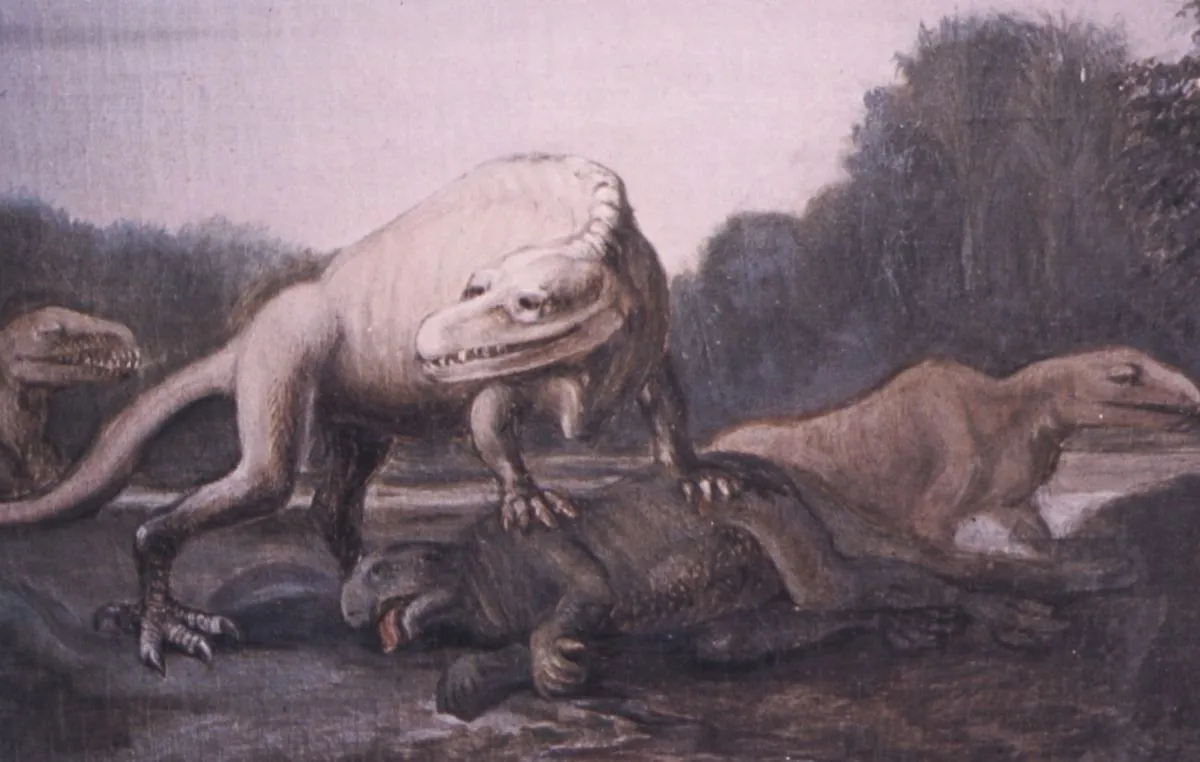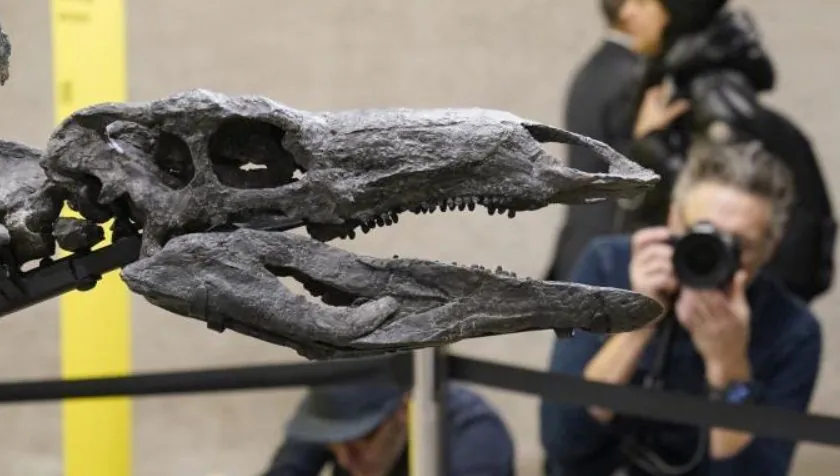British scientists discover largest place to preserve dinosaur tracks - BBC
Kyiv • UNN
About 200 dinosaur tracks belonging to sauropods and megalosaurs have been found in the Oxfordshire quarry. Some of the tracks are 150 meters long, and the find is 166 million years old.

The largest site in the UK with dinosaur footprints dating back 166 million years was found in a quarry in Oxfordshire. Scientists have found about 200 prints belonging to sauropods and megalosaurs, giant herbivorous and carnivorous dinosaurs.
Writes UNN with reference to the BBC.
Details
The largest area in the UK with dinosaur footprints has been found in a quarry in Oxfordshire. About 200 large prints left 166 million years ago have been preserved on the limestone surface.
The footprints belong to two types of dinosaurs: long-necked herbivorous sauropods known as Cetiosaurus and smaller predatory megalosaurs.
Some of the trails are up to 150 meters long, although scientists suggest that they could have been much longer, as only part of the quarry has been excavated.
It's one of the most impressive find sites I've ever seen in terms of scale, in terms of the size of the footprints. You can step back in time and get an idea of what it was like to have these massive creatures just wandering around, going about their business
Gary Johnson, an employee of Dewars Farm Quarry, first noticed the tracks when he was operating an excavator.
I was just clearing clay, came across a hump and thought it was just an anomaly in the ground. But then it moved on to another one, 3 meters long, and it was a hill again. And then another 3 meters, and another hump
In the 1990s, another section of track was found nearby, so he realized that the regular potholes and dips could be dinosaur tracks.
I thought I was the first person to see them. And it was so surreal - a little scary, actually
This summer, more than 100 scientists, students, and volunteers took part in excavations at the quarry, which became the centerpiece of the new Excavations for Britain series.
During the research, the team discovered five different tracks. Four of them belonged to sauropods, herbivorous dinosaurs that moved on four legs. Their tracks resemble elephant tracks, but are much larger, as these giants reached up to 18 meters in length. Another trace is believed to have been left by a megalosaurus.
It's almost a caricature of a dinosaur footprint. This is what we call a tridactyl print. It has three fingers that are very, very clearly visible in the print. The whole animal could have been 6-9 meters long. These were the largest carnivorous dinosaurs we know of from the Jurassic period in Britain
Predatory dinosaurs that moved on two legs were agile hunters, the researchers say. Their habitat was a shallow, warm lagoon where dinosaurs left their tracks in the muddy ground.

Prof. Richard Butler, a paleobiologist at the University of Birmingham, suggests that some event, probably a storm, contributed to the preservation of these traces as fossils by covering them with a layer of sediment.
During the excavations, the team studied the tracks in detail. After taking more than 20,000 photos, they created 3D models of the entire site and individual tracks.

Casts and models help us understand how dinosaurs moved and what their habitat was like.
Dinosaur footprints are a snapshot of their lives. They provide unique information that cannot be obtained from fossilized bones
One of the sites even shows how the paths of the sauropod and megalosaurus intersected. The analysis of the preserved prints showed that the sauropod was the first to pass through this area, as its large round footprint is slightly pressed by the three-toed footprint of the megalosaurus.
“To imagine how this dinosaur moved around by pulling its feet out of the mud is an incredible feeling,” said Dr. Duncan Murdoch of Oxford University.